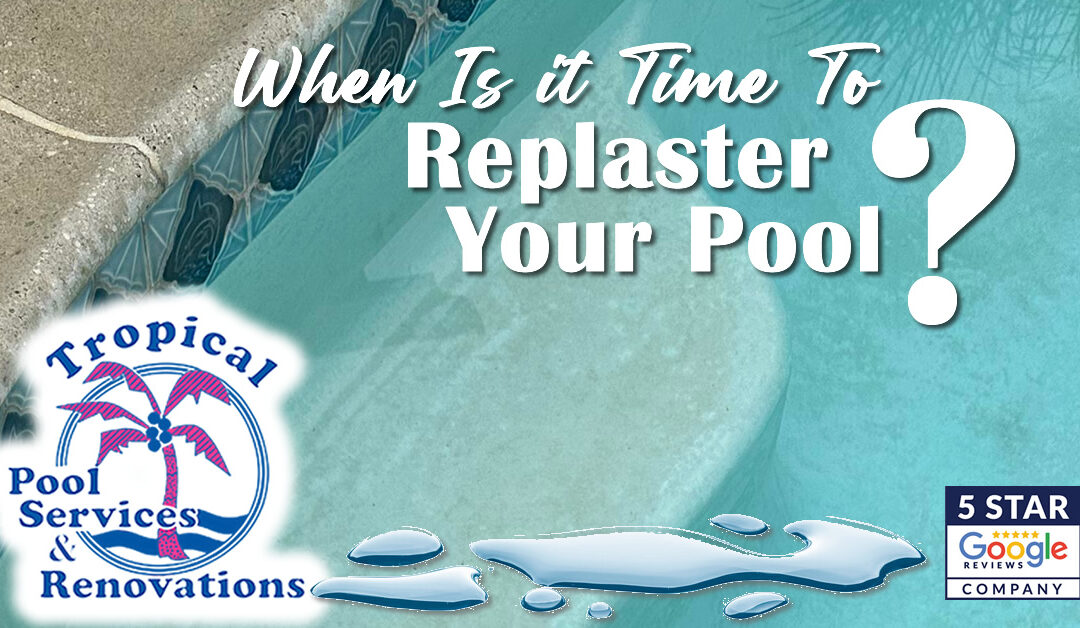When Is It Time to Replaster or Resurface Your Inground Pool?
Owning an inground pool is a luxury that provides relaxation, fun, and a beautiful addition to your backyard. However, like any part of your home, your pool requires regular maintenance to stay in top condition. One of the most critical aspects of pool maintenance is knowing when it’s time to replaster or resurface your pool. At Tropical Pool Service & Renovations, we help pool owners identify the signs of wear and ensure their pools remain safe, functional, and visually stunning.
Understanding Pool Plaster and Its Lifespan
The plaster finish inside your pool serves both functional and aesthetic purposes. It creates a smooth, waterproof barrier that protects the pool shell while giving the water its sparkling appearance. Over time, exposure to chemicals, weather, and constant use can wear down this protective layer.
Typically, pool plaster lasts between 7 to 15 years, depending on the type of plaster, water chemistry maintenance, and overall pool care. When this layer begins to deteriorate, it’s time to consider resurfacing.
Signs It’s Time to Replaster or Resurface Your Pool
If you’re unsure whether your pool needs resurfacing, look for these common indicators:
- Rough or Pitted Surface:
As plaster ages, it becomes rough to the touch, creating an uncomfortable swimming experience and increasing the risk of skin abrasions. - Stains and Discoloration:
Chemical imbalances, metal deposits, and algae can leave stubborn stains on the pool surface that regular cleaning can’t remove. These stains can make the pool look aged and uninviting. - Cracks and Structural Damage:
Hairline cracks in the plaster may not seem urgent, but they can worsen over time, leading to leaks and more extensive damage if left untreated. - Chalking or Flaking:
If you notice a chalky residue on your hands or pool brush while cleaning, it’s a sign that the plaster is deteriorating and losing its integrity. - Persistent Water Loss:
While some water loss is normal due to evaporation, consistent drops in water level may indicate that cracks in the plaster are allowing water to escape. - Faded or Dull Appearance:
Over time, the vibrant color and smooth texture of your pool’s surface will fade. Resurfacing restores the pool’s aesthetic appeal, enhancing the overall look of your backyard oasis.
Why Resurfacing Matters
Delaying pool resurfacing can lead to more significant problems, including structural damage and increased maintenance costs. A compromised surface can also affect water quality, making it harder to balance chemicals and keep the pool safe for swimming.
Resurfacing not only restores the look and feel of your pool but also ensures it remains watertight, easier to clean, and more enjoyable for years to come.
Choosing the Right Surface for Your Pool
When it’s time to replaster or resurface, you’ll have several options to choose from, each offering unique benefits:
- Standard Plaster: A classic, affordable choice that provides a smooth finish and comes in various colors.
- Quartz Finish: A blend of plaster and quartz aggregates, offering enhanced durability and a vibrant, long-lasting appearance.
- Pebble Finish: Known for its textured look and exceptional longevity, pebble surfaces resist staining and chemical damage.
- Polished Finish: A smooth, high-end option that combines aesthetic appeal with strength.
Trust Tropical Pool Service & Renovations for Your Pool Resurfacing Needs
At Tropical Pool Service & Renovations, we specialize in high-quality pool resurfacing and replastering. Our experienced team can assess the condition of your pool, recommend the

